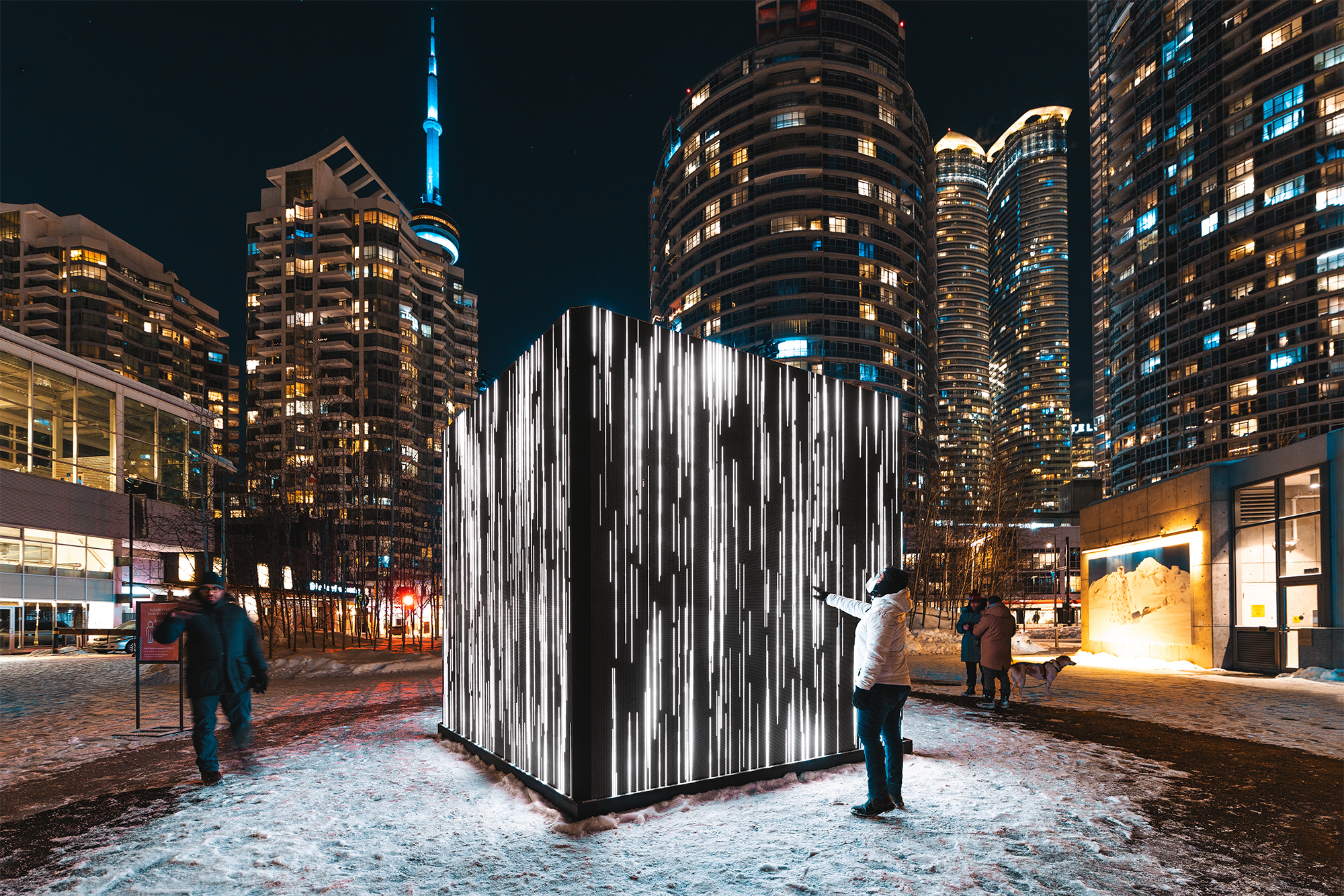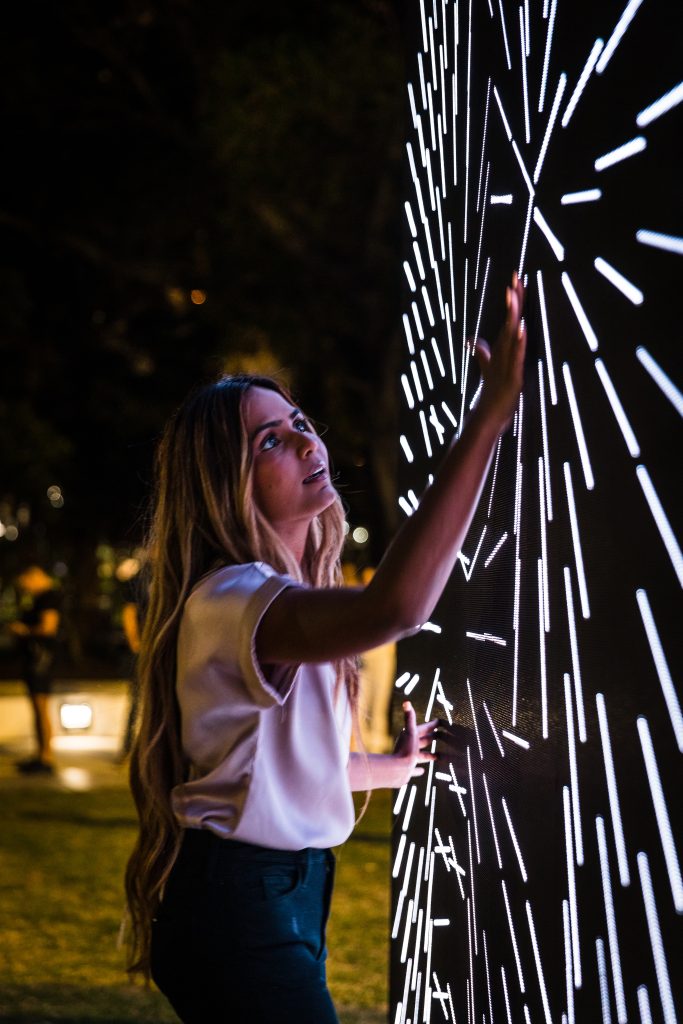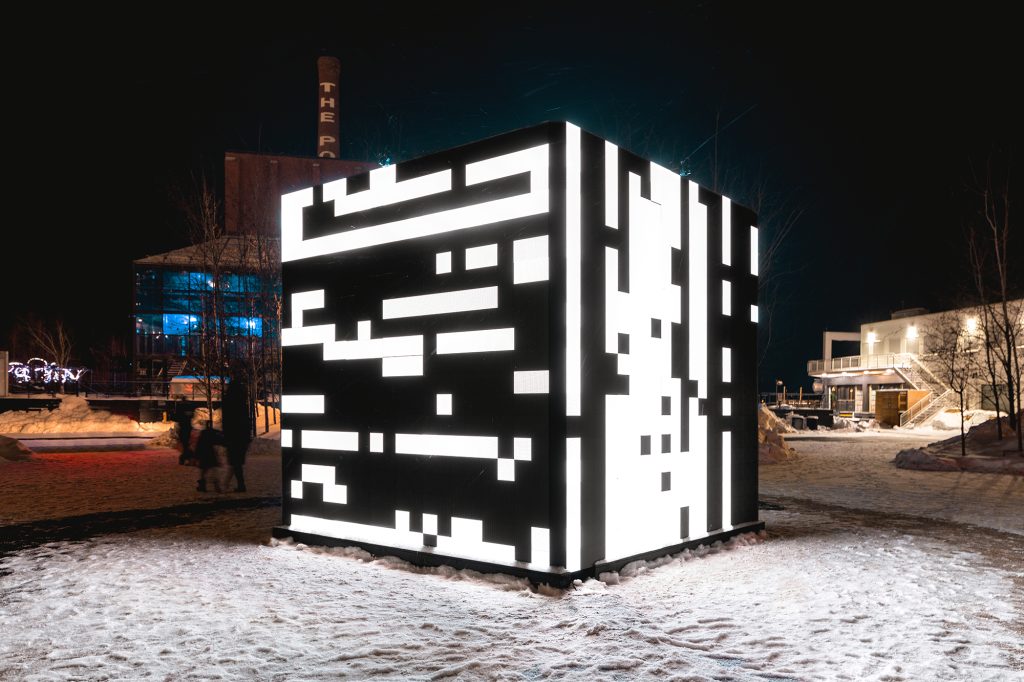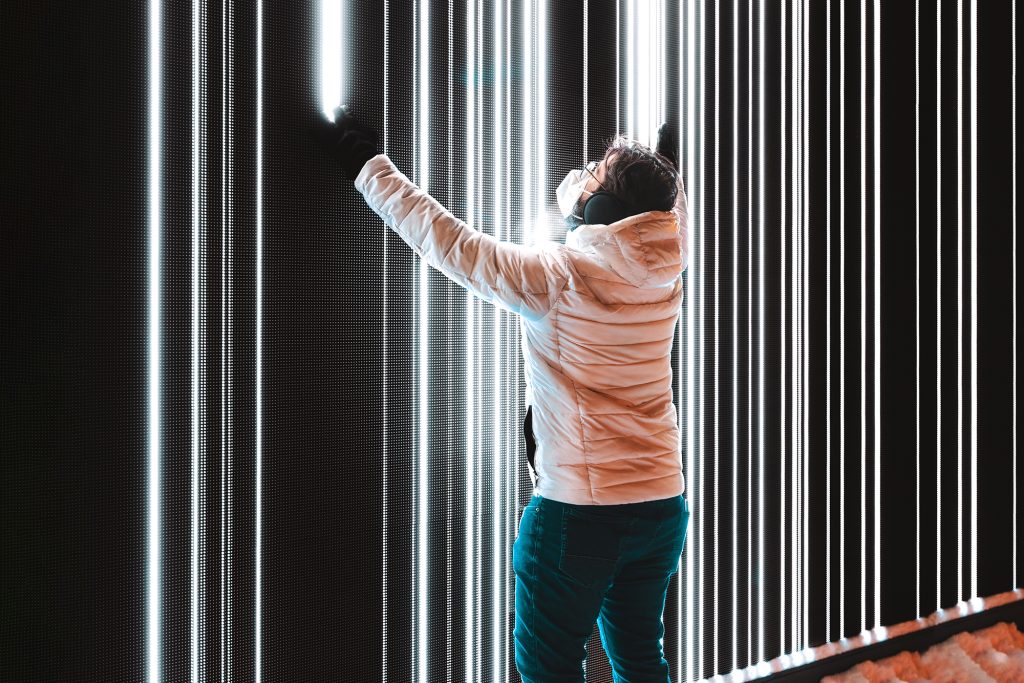In partnership with the New York City Department of Transportation’s Art Program, (NYC DOT Art), the Flatiron NoMad Partnership presents the New York City debut of Control No Control – a large-scale interactive installation by digital art studio Iregular. The installation is located on the Flatiron North Plaza at Broadway, Fifth Avenue, and 23rd Street. Control No Control will be on view through January 1, 2024.
The luminous installation will interconnect with Winter Glow, the Flatiron NoMad Partnership’s three-week series of interactive, pop-up programming that invites New Yorkers and visitors to celebrate the season through light, art, games, music, and dance. “Public art brings our public spaces to life, and this interactive installation will captivate and delight crowds this holiday season,” said NYC DOT Commissioner Ydanis Rodrirguez.
“Our work is incomplete without public interaction. The challenge for us is thus to always find ways to attract the crowds and encourage them to engage no matter where we are in the world,” said Daniel Iregui, Founder of Iregular. “After 13 years, we are finally testing this out in New York City, where pace of life is unrelenting and audiovisual stimuli is omnipresent, and we are very excited for this to happen beside none other than the iconic Flatiron building.”
Control No Control is a big LED cube that reacts to everything that touches it and every movement performed on its surface. Streamlined patterns and generative sound emerge as interaction occurs. Allowing 48 people to participate at the same time, the experience is extremely intuitive, leading to quick audience engagement and prolonged interactions. Conceived for big open spaces, Control No Control is a large-scale interactive installation in the form of a minimalistic geometric structure. Created in 2011 in Montreal for Igloofest, it has since been presented over 35 times around the world.
A sort of socio-digital experiment, the piece explores the relationship between participants and interactive installations. It tests the artwork’s ability to intrinsically “instruct” and delegate the final audiovisual result to the audience that ends up gaining control of the piece. After presenting it many times across continents and cultures, Control No Control revealed that people all over the globe tend to behave the same way around the cube, and all seemed to spend a lot of time engaging. This in turn suggests the ability for the artwork to influence the public as well, highlighting the back-and-forth blurred nature of the control relationship.
Editors at Side of Culture
Photos by Brian Medina




